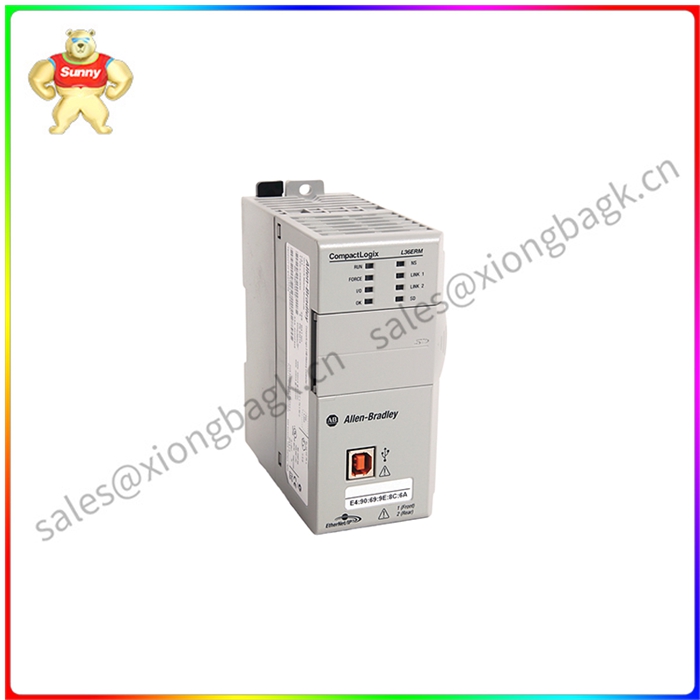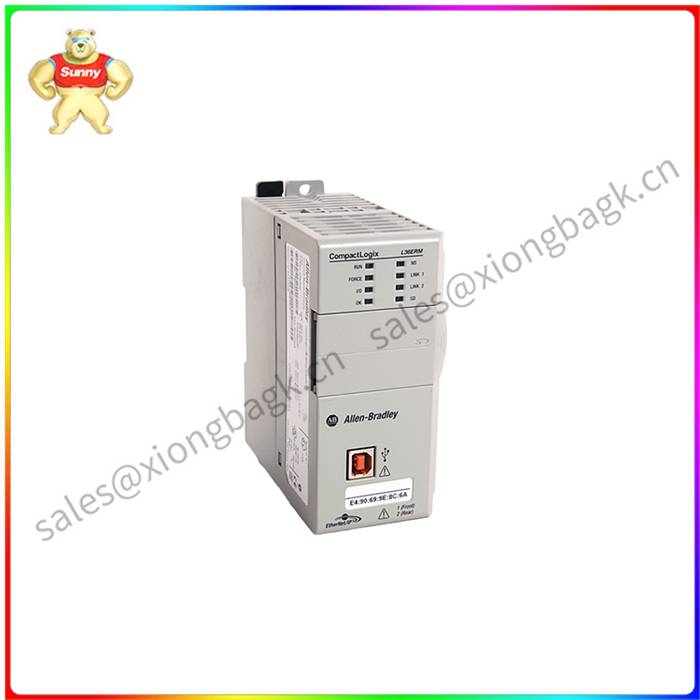1769-L36ERM CompactLogix控制器 不同I/O模块
1769-L36ERM是由Allen-Bradley制造的CompactLogix控制器。本控制器通过嵌入式2个以太网端口支持以太网通信,通过RS232通信端口支持串口协议。该控制器支持本地级联模块,能够实现对本地和分布式I/O模块的控制。
Allen-Bradley 1769-L36ERM CompactLogix控制器可以与1769-SDN一起使用,以允许访问网络中的不同I/O模块,如数字,模拟和高速计数器模块。它有3mb的内存,可以支持1或2 GB的SD存储卡。它配备了一个1gb的SD卡。
Allen-Bradley 1769-L36ERM CompactLogix控制器能够在温度范围为0至60摄氏度,相对湿度范围为5%至95%的环境中运行而不会凝结。为了延长控制器的使用寿命,同时提供安全操作,遵循这些要求非常重要。
Allen-Bradley 1769-L36ERM CompactLogix控制器可以支持多达32个连续任务和100个可编程任务。1769-L36ERM CompactLogix控制器采用的编程语言有继电器梯形、结构化文本、函数块。Allen-Bradley 1769-L36ERM CompactLogix控制器需要一个24伏的直流数字输入。该控制器结构灵活,功能齐全,设计紧凑,广泛应用于不同行业。
艾伦-布拉德利1769-L36ERM是一种可编程自动化控制器(PAC)。该模块是一个处理器下的CompactLogix 5370 L3控制器或通常称为1769 CompactLogix。该控制器具有集成的3MB用户内存,可选择安装非易失性内存。随控制器发货的1784-SD1卡带有1gb内存,可以替换为1784-SD2卡。这些安全数字卡提供非易失性存储器,允许控制器从该卡加载用户程序。它可以在本地通信总线中容纳多达三十(30)个1769紧凑型I/O模块,或者可以添加多达三(3)个I/O扩展组,以满足过程中的额外I/O。该控制器具有双以太网通信端口和USB接口。它还提供了一个集成的运动能力,支持多达十六(16)轴。
该控制器是支持DIN导轨或直接面板安装的无机架控制器。安装此控制器时,必须遵守电源距离额定值,以使装配合格。控制器与电源的具体要求距离为4(4),即控制器与电源的安装距离不能超过4个模块。
配置IP地址时,可以使用boot - dhcp或rsnetwork For Ethernet。V21。xx及以后的版本,使用Studio 5000 Logix设计器。控制器支持国际电工委员会(IEC)标准61131-3指定的编程语言。下载到控制器的程序可以用继电器梯形、结构化文本、功能块和顺序功能块(SFC)制作。

1769-L36ERM CompactLogix控制器 不同I/O模块
The 1769-L36ERM is a CompactLogix controller manufactured by Allen-Bradley. The controller supports Ethernet communication through two embedded Ethernet ports, and supports serial protocol through RS232 communication ports. The controller supports local expansion modules and can control local and distributed I/O modules.
The Allen-Bradley 1769-L36ERM CompactLogix controller can be used with the 1769-SDN to allow access to different I/O modules in the network, such as digital, analog, and high-speed counter modules. It has 3mb of memory and can support 1 or 2 GB SD memory cards. It comes with a 1gb SD card.
The Allen-Bradley 1769-L36ERM CompactLogix controller is capable of operating in a temperature range of 0 to 60 degrees Celsius and a relative humidity range of 5 to 95 percent without condensation. In order to extend the life of the controller while providing safe operation, it is important to follow these requirements.
The Allen-Bradley 1769-L36ERM CompactLogix controller can support up to 32 continuous tasks and 100 programmable tasks. The 1769-L36ERM CompactLogix controller uses programming languages such as relay ladder, structured text, and function blocks. The Allen-Bradley 1769-L36ERM CompactLogix controller requires a 24-volt DC digital input. The controller has flexible structure, complete functions and compact design, and is widely used in different industries.
The Allen Bradley 1769-L36ERM is a programmable automation controller (PAC). The module is a processor under the CompactLogix 5370 L3 controller or commonly referred to as the 1769 CompactLogix. The controller has an integrated 3MB of user memory with the option to install non-volatile memory. The 1784-SD1 card shipped with the controller has 1gb of memory and can be replaced with a 1784-SD2 card. These secure digital cards provide non-volatile memory that allows the controller to load user programs from the card. It can accommodate up to thirty (30) 1769 compact I/O modules in the local communication bus, or up to three (3) I/O expansion groups can be added to accommodate additional I/O in the process. The controller has dual Ethernet communication ports and USB interfaces. It also provides an integrated motion capability that supports up to sixteen (16) axes.
The controller is a rackless controller that supports DIN rail or direct panel mounting. When installing this controller, the power distance rating must be observed to qualify the assembly. The required distance between the controller and the power supply is 4(4), that is, the distance between the controller and the power supply cannot exceed 4 modules.
When configuring IP addresses, you can use boot-dhcp or rsnetwork For Ethernet. V21. For xx and later, use the Studio 5000 Logix Designer. The controller supports programming languages specified in International Electrotechnical Commission (IEC) standard 61131-3. Programs downloaded to the controller can be made using relay trapezoids, structured text, function blocks, and sequential function blocks (SFC).






 QQ在线客服
QQ在线客服